#de la pole
Text
A Doomed Pretenders Project: Richard de la Pole, the Last White Rose
Hi again!
This time, I've opted to go for the upper-bound time-wise of this project (before things get too Renaissance-y), with a command base to represent Richard de la Pole, or Richard IV, titular Duke of Suffolk and the last serious military contender for the House of York, before his death in the Battle of Pavia in 1525.
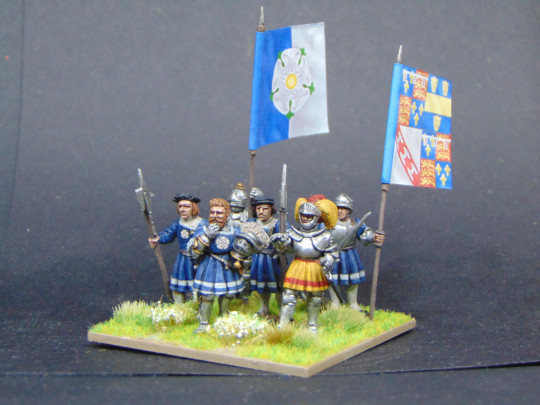
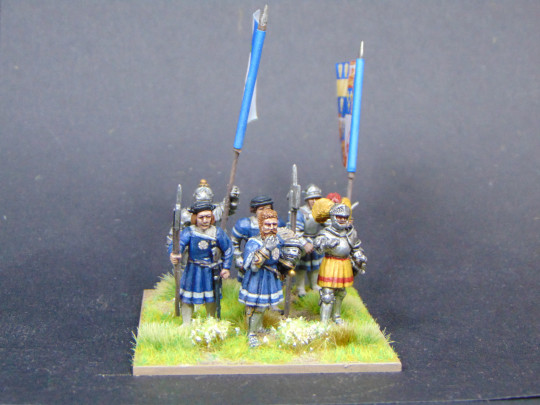
De La Pole (and his brothers) presented a fairly serious threat to the early Tudor regime, having a stronger claim to the throne than Henry VII. While the eldest brother died in 1487 at Stoke Field, and Richard's other elder brothers arrested and/or executed by the Tudors, Richard was able to flee to Europe, where he ended up being notably charismatic, winning over a number of highly influential figures in France, the Holy Roman Empire and Hungary to support his claim. Plans were made under both Louis XII and Francis I to support an invasion of England with Scottish support, and with rumblings of Yorkist sympathisers in England itself and the earls of Desmond and Kildare in Ireland happening as well, it's no surprise that the Tudors saw the pretender as a problem. Adding to their concerns, Richard de la Pole had become a seasoned battlefield commander during the start of the 16th century, leading forces of Landsknecht on behalf of France in Italy and Navarre, giving him vital experience that the earlier Yorkist pretenders definitely lacked!
First up on the base are a pair of retainers with halberds, to act as bodyguards for de la Pole. Desmond Seward in The Last White Rose mentions that during Richard's stay in Metz in the 1510s he retained a group of musicians and bodyguards in blue and grey livery, so I've used that as the basis for the colours on the livery jackets. I thought it was a bit unusual that unlike every other de la Pole Richard decided to opt for grey instead of yellow in his livery, but my guess is that it may be a deliberate call-back to his grandfather Richard Duke of York's blue and white livery during the War of the Roses. With that in mind, I've added a white rose to the chest of the livery jackets, to tie-in de la Pole to York, and as a pastiche of Henry Tudor's own retainers. Both retainers are based on Steel Fist standing dollies, with Perry Early-Tudor heads and medieval arms
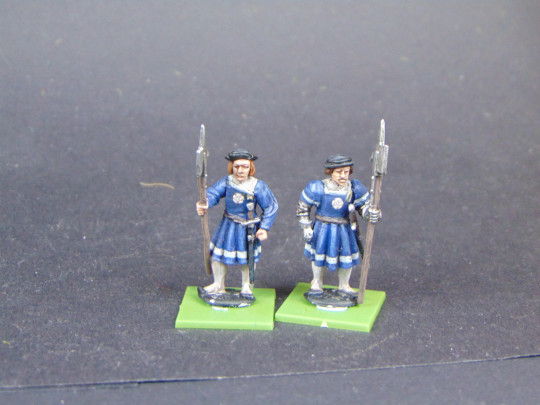
Next up are the two standard bearers on the base (one for Richard de la Pole's personal arms, and the other for his livery banner). One standard bearer is an unmodified War of the Roses figure in older armour, while the other is a liveried retainer built using the same method as the two others
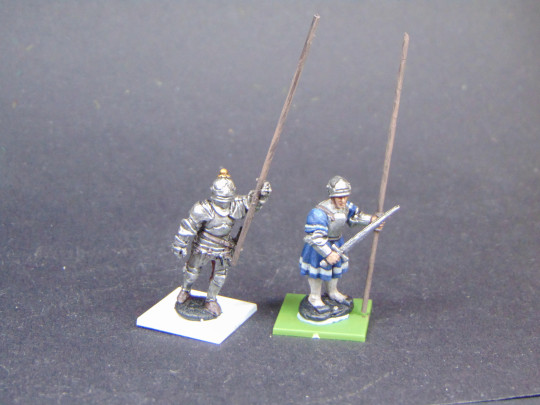
Also on the base is a knight, pointing out something on the horizon to Richard. I'm using him to represent an attaché from France or Foix to provide battlefield support for Richard, or alternatively an English exile, adventurer or opportunist who decided to throw in with de la Pole. The figure is one of the excellent Steel Fist Miniatures Italian Wars foot knights without any modifications
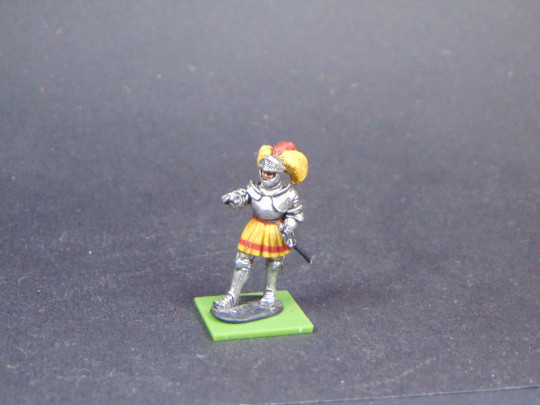
And finally, the pretender himself, Richard de la Pole, Duke of Suffolk. Like the other knight, Richard is a Steel Fist Miniatures Italian Wars foot knight. I love the pose for this figure in particular for a commander, and Richard de la Pole seemed like an excellent excuse to use the figure!

I've painted de la Pole's jacket in his livery colours of blue and grey, and like with his retainers, I've given him a white rose livery badge (only larger!). I've not found any decisive evidence for any livery badges used by Richard, compared to his father, or older brother John, but I made the assumption that seeing as just about everyone among his contemporaries refers to him as the White Rose, that he must have some effective 'branding' and actively cultivated that association.
I decided the beardy head quite nicely captures the look of the portrait that shows up on Google when you search for Richard de la Pole (although, I think it may be actually of Charles III, Duke of Bourbon instead from what I've found!)
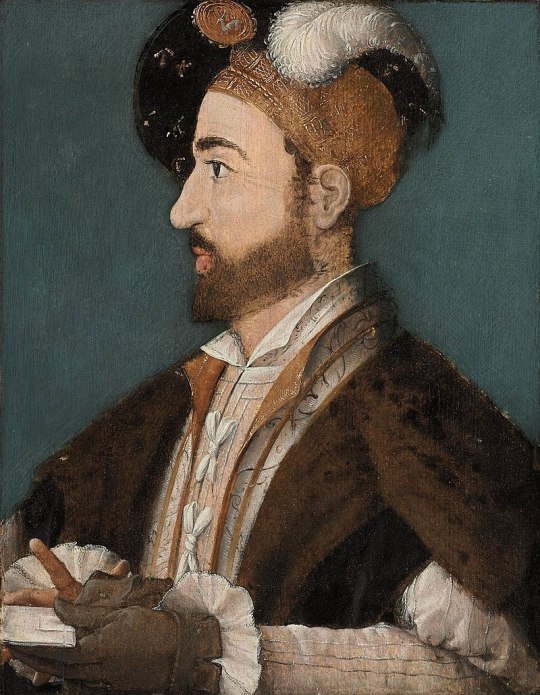
And finally, a couple of pictures of the command base on a grassy field

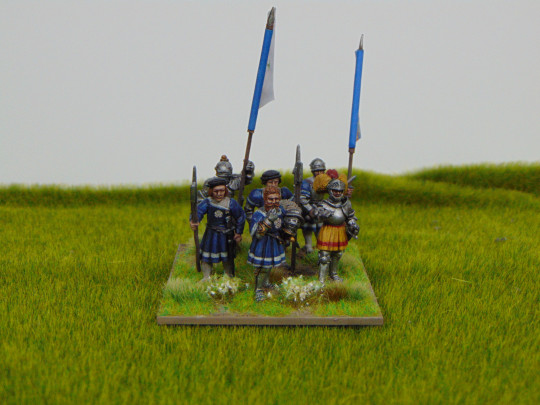
#28mm#28mm historical#doomed pretenders#richard de la pole#de la pole#war of the roses#italian wars#house of york#16th century#tudor#tudors#medieval#minipainting#wargaming#medieval wargaming#perry miniatures#steel fist miniatures#battle of pavia
15 notes
·
View notes
Text
Discussing the de la Pole claim (2/3): The Tudor-de la Pole cohabitation (1485-1501).
John de la Pole clearly favoured his uncle Richard III considering that he fought at Bosworth for him. The annuities and offices bestowed upon him by Richard III alone could explain his support. He was captured by Henry VII, spared, and then released with a position on the Royal Council. A few months later, he would exile himself to the Continent, plot with his aunt Margaret of York and various discontents to... enthrone Lambert SImmel, claiming he was Edward Plantagenet, Earl of Warwick. This move often puzzled historians (and led to bad takes). Why didn't John de la Pole push his claim and favour an obvious fake?
We cannot know for sure, but part of the answer might be that Richard III did not name John his heir. Hence, John de la Pole would have more difficulties making good his blood claim to the throne. It also explains why Henry VII decided to release him shortly after Bosworth. Henry VII clearly regarded Warwick as a potential rival, but less John.
John de la Pole might have had royal ambitions. However, he clearly put them aside for the last Plantagenet, who carried more support. Warwick might have been more popular in Ireland or with his aunt Margaret of York. Maybe John intended to show Simmel as a fake after his victory, but that would pose the question of what he would do with the real Warwick if he won at Stoke. It would be dangerous to usurp the throne and risk losing the support of his allies, who clearly preferred Warwick. An intermediate and more realistic goal for John might have been a restoration of his annuities, offices, and the influence John had with Richard III. While Henry VII released and didn't attaint him, he took back Richard's grants and John, as a new convert to the Tudor dynasty, carried a minor influence on the new king. A grateful Edward V (or VI) would have been better for him.
Anywhomst, John lost at Stoke and was killed in action. Henry VII wanted to avoid making a foe from John's father, Suffolk and granted his son's land to him, but without the possibility of transmitting them to his four surviving sons.
The death of John de la Pole, Duke of Suffolk, in 1492 would change Henry VII's approach to the de la Pole family. A sizeable chunk of de la Pole estate was returned to him ( Lincoln's lands), while Suffolk's widow was granted 1/3 of her late husband's estates as dowry. Edmund de la Pole would become a young but impoverished duke with less than £1,000 of income. Henry VII would make a deal with him, giving back a portion of his brother's lands in exchange of £5,000, paid progressively and the demotion of his title from duke to earl (his grandfather's title until 1448). Interpreting this deal is difficult between the view of Henry VII seeking to humiliate and reduce a rival or a deal made to keep afloat a magnate that might have sunk otherwise. Edmund's grandfather owed his dukedom from heavy-handed favours from Henry VI that were lost in 1450. Edmund's father was probably demoted in 1459 because of an inability to sustain his rank before Edward IV's usurpation that restored his ducal title. The de la Poles were poorly endowed, and with a king unwilling to actively help them, a demotion was inevitable.
Edmund de la Pole's career as a magnate (1492-1501) shows that de la Pole-Tudor enmity wasn't unavoidable. After initial and difficult settlements with the Crown, Edmund de la Pole had a loyalist career. He accompanied Henry VII at his attempted siege of Boulogne (1492), and more importantly, he was a loyalist leader against the Cornish rebellion in 1497. Edmund actively supported Henry VII against a serious rebellion of 15,000 Cornish led by lord Audley and fought for Henry at the battle of Blackheath. There were also no links between him and the Perkin Warbeck conspiracy (contrary to his East-Anglia neighbour, lord Fitzwalter). Edmund de la Pole had a seemingly loyalist career and seems to have been close to the queen, Elizabeth of York.
The relationship between the king and the Earl of Suffolk started to collapse in 1498 when Edmund murdered a man and was judged on the king's bench but eventually pardoned by Henry VII. It is possible that Suffolk resented a humiliating trial. In july 1499, Edmund did flee to Guisnes, a city controlled by England whose governor was Sir James Tyrell. The reason for such a departure is unknown. Notably, the plot to free Warwick and Perkin Warbeck from the Tower of London was under fruition at that time, and Suffolk was sometimes in London. However, he returned to England in September and was present at court when Henry VII decided to execute Perkin Warbeck, various of his accomplices, and the last Plantagenet.
Those executions hurt Henry VII's relationship with Edmund. Any discontent toward Tudor rule would come to him as a claimant by default, considering the end of other Yorkist pretenders.
Henry VII was more wary about a magnate who was a prime alternative to his rule and proved erratic and unreliable. He applied pressure: Edmund lost two trials in 1500-1 and was fined £100 for claiming the allegiance of a yeoman and lost a trial regarding contested lands in Norfolk. Some of his close servants were fined for not appearing in front of the King during his short exile.
Loss of favour, reduction of income and judicial guerilla pushed Edmund into exile in 1501. This second exile could have been temporary but retrospectively became a turning point of the De la Pole-Tudor relationship marked by open confrontation. Edmund knew that any pardon from Henry VII wouldn't solve his issues regarding income and loss of power and prestige as a magnate while Henry VII perceived Edmund as an unreliable and dangerous vassal who couldn't be trusted.
#De la Pole#John de la Pole#Edmund de la Pole#Earl of Suffolk#Earl of Lincoln#war of the roses#henry vii
5 notes
·
View notes
Text



peace of mind.
#illustration#art#digital art#digital illustration#artists on tumblr#drawing#nicolas moreno#sun flare#tags#graffiti#de la soul#a tribe called quest#power pole#utility pole#b#flowers#magnolia#aestethic#chill#ball#basketball#sports#nba#chill vibes#chillout#vibing#summer#sunshine#sun
4K notes
·
View notes
Photo








↳ richard iii of england + alphabet
#richard iii#aneurin barnard#the white queen#house york#house plantagenet#history#english history#twq#richard iii of england#anne neville#cecily of york#edward iv#george plantagenet#elizabeth woodville#richard of york#henry vii#margaret of york#john de la pole#historyedit#twqedits*#alphabet*#my gifs#creations*
391 notes
·
View notes
Photo


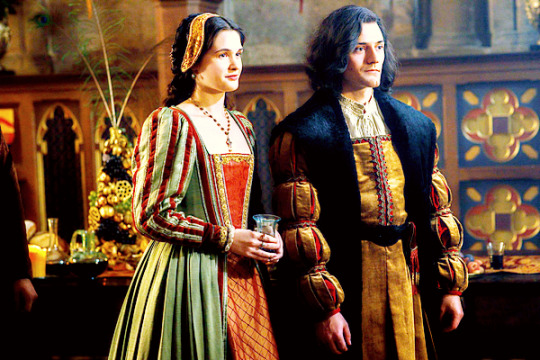

SAI BENNETT as Mary Tudor, Princess of England
↳ The Spanish Princess, Part Two Episode One - Camelot
#the spanish princess#thespanishprincessedit#perioddramaedit#sbennettedit#sai bennett#theo ancient#amelia gething#clark butler#sam john#antonio de la tour#jordan renzo#mary tudor#mary rose tudor#mary queen of france#henry pole#ursula pole#reginald pole#charles v#ferdinand of aragon#Charles Brandon#edit#ours#ours: all#ours: picspam#ours: edit#ours: the spanish princess#tvshow: the spanish princess#ours: tvshow#by neta
169 notes
·
View notes
Note
Don't know much about papal history so was wondering "What if" at 1550 papal conclave Englishman and cousin to the Tudors Reginald Pole had won which in real life he nearly did? He seems to be not completely fairly viewed as conservative because he opposed the Act of Supremacy and his own life outside of the Tudors gets overshadowed.
I don't particularly know much about Reginald de la Pole's intra-Catholic religious politics (where did he stand on the Counter-Reformation? Was he an arch-traditionalist or more of an Erasmian reformer?) but I think he's generally viewed as someone with strong Catholic beliefs, given his position on the King's Great Matter let alone the Act of Supremacy.

To be honest, I think the main impact of de la Pole being elected Pope would be the rapid acceleration and intensification of English Anti-Catholicism.
If the Bishop of Rome is not merely attempting to assert a foreign jurisdiction in England, but is a Yorkist Pretender to the throne seeking to bring down England's Josiah, things are going to get very dicey very suddenly because now being an open Catholic or having Catholic sympathies is going to be seen as high treason pure and simple. In this timeline, exclusion from the succession is not going to be enough for Mary, and she will probably go down in history as a willing martyr for the True Religion.
With Queen Jane I and King John II jure uxoris leading the charge after Edward's death, there will be no room for the more Catholic-friendly elements of the Elizabethan religious settlement - England is going to go full Calvinist along with Scotland, the Netherlands, and the Huguenots. In fact, England is going to get stuck into the French Wars of Religion and try to detach as much of coastal France as it can in the name of Reformed Religion.
18 notes
·
View notes
Text
Blocking porn accounts like Henry Tudor blocked Yorkist pretenders to his throne
34 notes
·
View notes
Note
I know Elizabeth of York has met the person suspected of murdering the prince in the tower? It makes me curious. It is said that the Queen and her cousin Suffolk are very close, which makes me doubt whether this meeting is for her brother or cousin
Hi! There's actually no direct evidence that Elizabeth was 'very close' to Edmund de la Pole. He was often at court and they were cousins so it's likely that they saw each other and had opportunities to talk but there are no recorded gifts or office appointments from Elizabeth to him, so I wouldn't say they were particularly close like she was to his sister Anne (the abbess of Syon), for example, a cousin with whom she did indeed exchange gifts.
But to go back to your question, yes Elizabeth visited the Tower around the time Sir James Tyrell was imprisoned and interrogated there. No records from Henry's own reign say Tyrell was implicated in the death of Elizabeth's brothers — Tyrell was condemned for his participation in the conspiracy involving Edmund de la Pole — but Thomas More claimed that Tyrell, whilst imprisoned, confessed that Miles Forest and John Dighton killed the princes at his instance. This claim has been extensively doubted but new evidence recently discovered (2020) shows that More was in touch with the sons of one of the men he alleged to have carried out the murder for Tyrell, as he himself indicated in his text: 'as I haue learned of them that much knew and litle cause had to lye, wer these two noble princes [...] murthered'.
Whether Tyrell's real confession that Elizabeth heard was about the murder of her brothers or about her cousin Edmund's treasonous plans, it's interesting that almost immediately after hearing Tyrell's confession Elizabeth left the Tower and visited her aunt Elizabeth the Duchess of Suffolk at her house at Stepney (London). Tim Thornton, who recently wrote an article about it, says that 'the immediacy of this visit might suggest the importance of any revelations from Tyrell in the Tower, and Elizabeth’s desire to pass news of the princes’ fate to their aunt, the last survivor of their parents’ generation'. For the Duchess of Suffok, news of her son's treason could be equally — if not more — important so my opinion is that Elizabeth's visit is no evidence for the confession involving the murder of her brothers.
It's difficult to say though why Elizabeth would have been in any way invited to hear a confession about treasonous activities against her husband the king, when by that point there had been several and she had not been involved in any other of Henry's interrogations carried out in the Tower (Henry's willingness to take a personal role in the questioning of prisoners has been confirmed in other cases but never Elizabeth's). So we'd have to take into consideration both Elizabeth's extraordinary presence and her subsequential visit to her oldest remaining paternal relative.
Thomas More's claim about Tyrell's confession and the fact that he came in contact with the alleged assassin's sons is also very intriguing. A possibility as to why Tyrell was not publicly exposed after his confession is that it would reflect badly on Henry VII for not only allowing the princes' murderers to go unpunished for so long, but also actively favouring them/keeping their privileges intact. It's difficult to say. It's a kind of evidence that definitely does not 'prove' anything.
#elizabeth of york#edmund de la pole#james tyrell#elizabeth of york duchess of suffolk#henry vii#ask#anon#historian: tim thornton
15 notes
·
View notes
Text

The last volume finally arrived even though it was released last month lol. I hope to collect this in English too, but for now I will enjoy the entirety of this prequel (plus side stories)💖 It was so good!😭 Once again, Aya-sensei delivers.💕🙇♀️
#requiem of the rose king#薔薇王の葬列#baraou no souretsu#the queen and the rose knight#margaret of anjou#henry vi#william de la pole#duke of suffolk#richard of york#aya kanno
14 notes
·
View notes
Text
The queen wore a high-collared black silk gown, with a hundred dark red rubies sewn into her bodice, covering her from neck to bosom. They were cut in the shape of teardrops, as if the queen were weeping blood.
I love this part so much because my mind instantly goes "Bolton looks" and my Theon x& Cersei (interpretative dynamic I like ships when they are unclear) au involves a Tywin who didn't die and sent Cersei to be married off to Roose and everyone is miserable. She would be horrible to Theon, but I think it would be hilarious to witness this terrible contrast in the way both of them deal with public humiliation and overall distaste for life.
This is a dumb concept of course but I'm still fond of it. I know the theoncersei ship is mostly a joke but I read that one fanfic on life journal and I think it could actually be so interesting if it were taken as a serious idea. Especially if we have a Theon who has been at the hands of Ramsay, but not enough to be so visibly changed as to not be recognised anymore. The idea of him being suddenly trusted back into society with people expecting him to act like nothing has happened because there would be no visual evidence is so interesting and painful to me. It has the type of trauma one develops after a failed suicide attempt, but even more complicated. An AU where he is expected to be functional (or as functional as he was during agot-acok) while internally dealing with everything that has happened to him...
I think there is something liberating about the Reek persona in the sense that there is no one who expects anything from him anymore (Alexa, play Bob Dylan's "Like a rolling stone"). He was so indignant when Jeyne asked for his help and to me that was entertaining because there was anger and rage at his internal treatment of her (What had she been thinking, that he would whistle up a winged horse and fly her out of here, like some hero in the stories she and Sansa used to love?) How dare she demand something from him? And then there is even more of that during TWOW when he is mentally raging at her for not remembering Mikken's name (Really Theon? Are YOU going to get mad at someone for hesitating at names?). Anyways there is so much anger in Theon during and after his torture, but it is always purely internal. From the outside, he is every whump fan's perfect protagonist. Poor little soggy meow meow who has been rivalling Dante's concept in Journey through Hell. From the inside it's a completely different thing (I like both of them. He is a reversible sweater and you can find beauty on both options); The way he refers to his torturers as "The Bastard's boys" (a nickname he doesn't dare to speak out loud but has given them himself. He indirectly refers to Ramsay as "Bastard" even if he is terrified of him) , the snark, the "she'll pray for you to march, Reek thought, and she'll pray that you never come back to her bed.", the way he thinks about the spearwives.
And yet all of that has to be repressed in order to keep himself alive and (considering the circumstances) safe. He has to swallow his pride and fury and his defiance and endure and I love that. Swallow your pride, my friend, it's not the worse thing you could swallow.
Cersei is different. Cersei almost always openly shows her disdain and fury at everything and everyone surrounding her and even after going through the cruellest humiliation she has suffered (Alexa, play Bob Dylan's "Like a rolling stone" again but this time the live version where people are booing him and he is sarcastically telling them how wonderful they are) she still keeps her head high, or as high as she can.
I don't know, both of them are on my top 5 pov characters and I would like them to interact beyond comedic relief type of dynamics (although I like those too) and I think there could be interesting explorations. I think in this weird nonsensical scenario where she becomes Cersei Bolton she would probably act like an anti-Jeyne in the sense that she too would demand for him to act more according to her notions of Theon Greyjoy but replacing Jeyne's soft and tender pleads for help with unjustified harshness and cruelty and a mocking type of defiance. Jeyne pets the dog, Barbrey taunts the dog, Cersei just straight up kicks it. I like imagining she would steal him from Ramsay as to have something mildly diverting in her boring Northerner lifestyle and that could be fun to explore.
#kind of fanfic rec#a little bit of music I like#also kind of#prompts#I feel like †hyene is “I NEED to fix him if I want to get out of here” and she actually manages to fix him a little#barbtheon is “I could fix him” but she accidentally makes him worse#while theoncersei is “I could make him worse” but she accidentally fixes him#and †hramsay is just I could find him bind him Tie him to a pole and break His fingers to splinters Drag him to a hole Until he wakes up#naked clawing at the ceiling of his grave#oh look at that more music I like#rambling gambling damning drowning#wordvomiting#speaking#deberiariquing privatizariting ming blogging ening vezing deing cantaring Mazúrquicaing Modérnicaing como la violetica parraica#theon greyjoy#Cersei lannister#theon x Cersei#kind of
22 notes
·
View notes
Text
#con mi mejor amiga nos estabamos cagando de risa xq sabiamos que estaba ahí pero de la nada apareció para dar el premio de la pole#akakhsshsjskdkfkr
5 notes
·
View notes
Text
Don't get me wrong I am not a william de la pole fan
But his letter to his son and his will to his wife?
"For above al the erthe my singular trust is moost in her"!??!?!?
Visceral reaction
And suddenly he's just a man who's only crime was have a king who loved him too much.
A man whose sister joined the rebellion immediately after his death calling for the king to stop having favourites because it. Gets. Them. Killed.
A man expecting to see his family in 5 years whose head was hacked off with a rusty sword and who was left to bleed naked into the sand until his body washed up in His County.
A man who tells his son to stay away from powerful nobles because no matter how good the power feels, it is Always too good to be true.
2 notes
·
View notes
Note
What exactly was the plot against Catherine of York's husband
Well you mean the plot made by CoY's husband. We don't have certainties but he was probably friendly/conspiring with the De la Poles which was very serious considering both his place in the royal family and the Courtenay's importance in south-west England.
Considering that Henry VII attainted and jailed William Courtenay until his death, it seems that William really did attempt something treasonous. Note that he wasn't the only one being arrested and that the 1501-3 purge by Henry VII is a very obscure event in which more nobles and gentrymen were purged than in almost any other period of his reign.
11 notes
·
View notes
Text
After Catherine died, Gloucester summoned Tudor before the council under a safe conduct; he sought sanctuary at Westminster. He maintained his innocence of any charge and was released, but on his way to Wales was arrested. His goods, worth £137 10s. 4d., were seized and he was consigned to Newgate prison, whence he escaped in January or early February 1438. After his recapture by John, Lord Beaumont (d. 1460), he returned to Newgate, and was then transferred to Windsor Castle (14 July) in the charge, soon afterwards, of Edmund Beaufort. Released in July 1439 on a £2000 recognizance, he was pardoned all offences on 12 November. Thereafter he was a member of the king's household; his two sons were in the care (1437–42) of the earl of Suffolk's sister, Katherine de la Pole, abbess of Barking, at the king's expense.
Ralph Griffiths, "Tudor, Owen [Owain ap Maredudd ap Tudur] (c. 1400–1461)", Oxford Dictionary of National Biography (2004, updated 2008)
#owen tudor#humphrey duke of gloucester#edmund beaufort 2nd duke of somerset#katherine de la pole#henry vi#historian: ralph griffiths#posting this because it's just the facts#and interestingly gives humphrey a minimal role in proceedings
2 notes
·
View notes
Text
Who have I forgotten?
#Margaret of anjou#anne neville#isabel neville#elizabeth of york#cecily neville#margaret de la pole#maggie pole#elizabeth woodvile#margaret beaufort#war of the roses#plantagenet#british history#womens history
6 notes
·
View notes
Text

Oil Painting, 1786, English.
By George Romney.
Portraying Anne, Lady de la Pole in a White Dress
MFA Boston.
#mfa boston#george romney#1786#1780s#1780s britain#1780s England#1780s painting#painting#oil painting#Anne lady de la pole#18th century#England#English#Britain#British#1780s hair#hair
5 notes
·
View notes